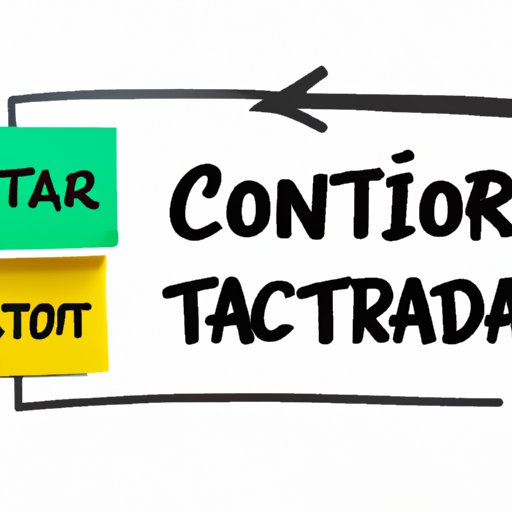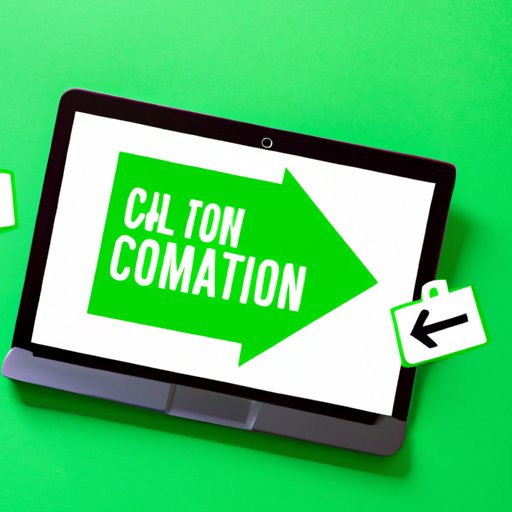
Introduction
In the world of modern marketing, businesses are constantly looking for ways to increase their reach and stay ahead of competitors. One effective way to achieve this is to strategically place Call-to-Action (CTA) in marketing campaigns. CTAs are an essential part of any marketing strategy. They direct prospective customers on what they need to do next and help businesses attain their marketing objectives. CTAs act as a tool to convert website visitors into leads or customers.
This article is an in-depth exploration of CTAs, its significance, and how to create effective CTAs. This article is structured into seven sections, each addressing essential to-dos, and why CTAs matter in modern marketing.
The Art of CTA: Understanding Its Significance in Marketing
Definition of a CTA and its Purpose
A Call-to-Action (CTA) is a marketing tool that guides a user to take a specific action. The action may differ depending on the context, but it is a crucial element of any marketing campaign. CTAs may be in forms of button, anchor text, or graphic element. They utilize engaging and persuasive text for the user to click on.
The purpose of a CTA is to incite action from the user. Typical CTAs include phrases like, “Buy now,” “Contact us,” “Register now,” and many similar action-driving phrases used in marketing. The purpose of these CTAs in marketing is to make the audience want to purchase or use the advertised product or service.
Explanation of How CTAs Help Drive Conversions
CTAs play a vital role in driving conversions. They convert website visitors into leads or customers. A well-designed CTA is essential because it engages the user, provides specific information about what the user will receive, and motivates the user to take action.
Ultimately, a conversion takes place when a user interacts with a CTA. For example, filling a registration form, signing up for a newsletter, or making a purchase. These conversions are essential for businesses to achieve their marketing objectives.
Examples of Effective CTAs in Marketing
Several businesses have had tremendous success with CTAs. Amazon’s “Buy it now” CTA is a perfect example of how effective and persuasive CTAs can be. The Amazon CTA removes all doubt and provides a clear call to action for the user, inviting them to take immediate action.
Another example is from HubSpot, which uses CTAs to invite users to download their free e-books. The CTA highlights the value of the content, creates a sense of urgency, and motivates the user to act.
CTA Demystified: Simplifying the Concept for Novice Marketers
Explanation of Common Misconceptions About CTAs
One of the significant misconceptions about CTAs is that they only belong on sales pages. This is not true, as CTAs can be used on various pages, including blog posts and social media.
Another misconception is that CTAs must always be in a button format, while in reality, they can also be used as text links. Additionally, you do not need to be a designer expert to create good CTAs. Webpage builders and online CTA tools are designed to help even the most inexperienced marketer to create impressive and effective CTAs.
Steps to Creating a Successful CTA
To create a successful CTA, it is essential to follow these steps:
Clear and concise message: A CTA should convey in a few words what the user will receive if they take action.
Persuasive copy: The copy should make the user want to take action immediately.
Urgency: Creating a sense of urgency encourages immediate action. This can be achieved by providing limited-time offers or sales.
Contrasting color: The CTA should contrast with the surrounding space to draw the user’s eyes straight to it.
Tips for Choosing the Right CTA for Your Marketing Campaign
Making the right choice of CTA may improve your campaign’s overall success. Below are a few tips to consider:
Relevance: Ensure your CTA aligns with the overall purpose of the campaign.
Placement: Position the CTA where it is easily visible and accessible.
Speak the customer’s language: Use language that reflects the customer’s perspective.
Why Every Marketer Needs to Master the CTA Game
Discussion of the Importance of CTAs in Marketing
CTAs are an essential component of any marketing campaign. They are used to drive conversions, guide the user, and highlight the value of products and services.
Explanation of How CTAs Can Impact Business Growth
Effective CTAs can contribute to business growth in many ways. For example, leads generated through CTAs can convert into customers, generating revenue and profit. Good CTAs can differentiate your brand from competitors, thereby contributing to long-term growth.
Overview of How Effective CTAs Can Differentiate Your Brand from Competitors
A well-crafted CTA can differentiate your brand from competitors. CTAs that are unique, creative, and memorable have a higher chance of resonating with the audience. This can set you apart from competitors, build brand recognition, and encourage customer loyalty.

CTA Strategies That Will Boost Your Online Conversions
Introduction to Different Types of CTAs
There are several types of CTAs that businesses can use, such as:
Buy Now: A CTA that encourages a user to buy immediately.
Signup: A CTA that invites a user to sign up for a service, such as a newsletter or a free trial.
Download: A CTA that invites the user to download a resource, such as an e-book or whitepaper.
Explanation of How to Optimize CTAs for Different Mediums Like Websites, Social Media, and Email Marketing
There are differences in the approach required for optimizing CTAs for different mediums. For example, email CTAs must be concise to appear correctly on mobile devices and ensure that the recipients see them. Social media CTAs should be reflective of the platform, such as adding a hashtag to Twitter CTAs.
Examples of Successful CTA Strategies
One successful strategy is the A/B split test. Businesses test which version of their CTAs resonates the most with their audience. Another strategy is creating situational CTAs. For example, a website may have different CTAs for returning visitors versus new visitors.
Beyond Clicks: Exploring The Power of CTAs in Modern Marketing
Discussion of How CTAs Can Enhance Customer Experience
Effective CTAs can improve customer experience. They guide users through the process, providing assurance as they move through the funnel.
Explanation of How CTAs Can Drive Customer Engagement
CTAs can help to drive customer engagement and feedback. CTAs can encourage users to provide feedback and interact with the business’s social media pages.
Examples of Creative CTA Usage
One innovative use of CTAs is using animated graphics. Creative graphics can grab the user’s attention while directing them to take action. Streaming platforms like Netflix and Hulu utilize CTAs to recommend related content and encourage users to continue watching.
The Psychology Behind Effective CTAs: How To Persuade Your Target Audience
Explanation of Psychological Principles That Impact CTA Effectiveness
Incorporating psychological principles into CTA creation can contribute to the effectiveness of the CTA’s message. For example, utilizing FOMO (fear of missing out), social proof, and framing.
Tips for Writing Persuasive CTA Copy
To write persuasive CTA copy, consider the following tips:
Clarity: Ensure that the message is clear and concise.
Urgency: Highlight the urgency of taking action.
Personalization: Speak directly to the user.
Examples of CTAs That Effectively Appeal to Different Audiences
Effective CTAs are those that appeal to the correct audience. A good example is Neil Patel, who caters to all levels of audiences in his CTAs, from beginners to experts.
Conclusion
Recap of the importance of CTAs in marketing as an essential tool in driving conversions, enhancing customer experience, and boosting business growth. It is vital to focus on creating effective CTAs that are designed to meet the specific needs of your target audience. Utilizing CTAs is a simple yet potent marketing tool that businesses need to master to stay ahead of competitors and generate higher revenue.




